
Who Were
The Cambs
The Cambs
at War
1/1st Btn 1914-1919
1914 - 1/1st Overview
1915 - 1/1st Overview
1915 - St Eloi
1915 - Fosse Wood
1916 - 1/1st Overview
1916 - The Schwaben
1916 - St Pierre Divion
1917 - 1/1st Overview
1917 - St Julien
Insignia, Medals & Books
Remembering The Cambs
Biographies
About Us &
This Site
Into battle on the Somme - 3rd to 5th September 1916
September 3 1916 would mark the first taste of battle on the Somme for the 1/1st Cambridgeshire Regiment, although they were not one of the attacking battalions of 39th Division.
North of the River Ancre, V Corps had 11th Royal Sussex and 14th Hampshire (both 116th Brigade, 39th Division) attacking on the right, with 16th Rifle Brigade and 17th Sherwood Foresters (both 117th Brigade, 39th Division) on the left, with the 4/5th Black Watch (118th Brigade, 39th Division) in the Ancre valley.
The Cambridgeshires were in close support, but their view of the attack was obscured. Capt Eric Wood MC, a platoon of B Coy, and some signallers were sent forward to keep the battalion’s commanding officer, Lt-Col Ted Riddell, informed of the attack’s progress. Capt Conrad Corfield, as liaison officer, along with four runners, was at the advanced HQ of 17th King’s Royal Rifles, while there was also an observation post of six Cambridgeshire men under Lt John Wrixon (who would be awarded the Military Cross two months later for his work at St Pierre Divion).
Riddell wrote in the battalion history:
Just before daylight on 3 September the roar of British artillery from the field guns between us and Hamel and along the Hamel-Mesnil road deafened our ears and drowned the sound of the guns we knew to be firing north, south and east.
The advance started at 5.10am with the Sussex and Hampshire soldiers securing the German front line after meeting little opposition. Wood reported that the Black Watch had crossed No Man’s Land. However the failure of the attack on the other side of the Ancre valley meant the German machine gunners on the Schwaben Redbout, near Thiepval, could shoot at will at the men attacking north of the Ancre.
Wood’s work on the day earned him a Bar to his Military Cross. He had been awarded an MC for his part in a raid on July 19, 1916. His bar citation read:
He commanded his company with great determination under heavy shell fire, collecting and organising stragglers under his own officers and NCOs. Throughout the day his cheerfulness and pluck gained him the complete confidence of his company.
Another Cambridgeshire officer, Major Harry Few, said Wood’s Bar to his MC meant the division was saved from what might have been a serious disaster from the German counter attack.
Soon Wood was reporting that the British were making no progress and sustaining heavy losses. The attackers were in a difficult position and soon the inevitable German counter attacks began.
Riddell described the problem:
They enfildaded our newly captured trenches, which now afforded little cover to our men owing to the devastating effect of our preliminary bombardment.
He sent the remainder of B Coy and C Coy to occupy the old British front line and meet the German assault. No sooner had the men reached their positions than the leading Germans advanced into No Man’s Land. Both companies did excellent work in organising returning attackers and consolidating the trenches.
We saw the Germans advance a few yards. Above the din of guns we heard the tac-tac-tac of our Lewis guns and rattle of rifle fire. We saw Germans fall dead or wounded and their survivors run back to their trenches, wrote Riddell.
Seeing the counter attack, Capt Corfield went into No Man’s Land where he and another man were slightly wounded by a machine gun fire and the bursting of a shell. This officer’s heroics resulted in the award of the Military Cross. His citation stated:
He set a fine example when consolidating a trench under heavy shell fire. He also brought in a wounded man under broad daylight, and later was himself wounded in carrying out a dangerous patrol.
Corfield joined the Indian Civil Service after the war and rose to high officer, eventually being knighted.
The fight was over and by nightfall the British were back in their own lines and the attack had failed. The Cambridgeshires, said Riddell, had held up the German counter-attacks.
Riddell made his way to the front line trenches, where officers and men lay dead so thickly that it was with difficulty that I picked my way without treading on the bodies. In the front line, the men were elated by the success in holding off the German counter-attacks.
During the darkness the Germans swept the area with machine gun fire, killing or wounding many of the Cambridgeshires who had been sent on errands of mercy to wounded men. The battalion was relieved that afternoon by 1/1st Hertfordshire Regt (118th Brigade).
Casualties in the Cambridgeshires amounted to one officer (2nd Lt John Croxton Walker, of D Coy) killed and four wounded, along with 61 other ranks killed or wounded (30 of these casualties had been sustained by D Company). 2nd Lt Walker had only been with the 1/1st Btn since August 10 and was killed by shellfire. The same shell killed 29-year-old Sgt Frank Ogden, of March, who was commanding a platoon of D Coy.
Writing to Ogden’s parents, Sgt Leonard William Hudson, who had also been wounded, said:
Our company was ordered up to support another battalion which was making the attack, and while we were awaiting orders to go over, a shell landed in the trench where I and nine other fellows were standing and knocked all of us, including our officer, out of action. Thank God I got off as light as any of them. Several had limbs blown away and several were buried. It was horrible.
Hudson was commissioned in 1917 in the Royal Sussex Regt, and awarded a Military Cross in 1918.
Others killed during this attack included:
Pte Harry Gall, of Wisbech but who lodged in March, and Cpl Will Halstead, of Walsoken, both of D Coy, who were hit by same shell and died within hours.
Killed aged 19 was Pte Bernard Quince, a grocer’s assistant from Walsoken, while Pte John Russell, of March, sustained a leg wound, and was sent to hospital at Rouen where he died, aged 19, on September 11. L/Cpl Albert Edwards, originally from Oldham and who had moved to Doddington in 1914 with his widowed mother, was also killed by shellfire, aged 25, serving with D Coy.
B Coy Stretcher bearer Pte Charles Chandler, of Cambridge, was killed, aged 26, and Pte Alfred Christmas, also of Cambridge, also fell, age 20. While all the other Cambridgeshires killed on September 3-4 are buried in Knightsbridge Cemetery, Mesnil-Martinsart., Christmas has no known grave and is listed on the Thiepval Memorial to the Missing.
Another B Coy man, Pte Frank Gill was also killed by shellfire, aged 19. One of B Coy’s sergeants, Dick Newman, was also killed; the warehouseman from Cambridge was 22. Cpl Edmund Pierson, of Quy, near Cambridge, also of B Coy, was killed aged 21, and Pte William Whitehead, who worked at Heffers booksellers in Cambridge, died aged 19, after only three months with the battalion.
Two men of the Cambridgeshires received the Military Medal for their bravery on September 3. They were Cpl Arthur Ernest Smith and Pte Fred Yaxley.
Smith, from Bourn, was a postal and telegraph worker, whose rare surviving MM citation states:
As a company runner in an attack on September 3rd 1916, he showed great bravery and devotion to duty in carrying messages backwards and forwards under very difficult circumstances and under very heavy shell fire.
Later promoted Sergeant, he didn’t survive the war, being killed on September 27, 1918 and is buried at Epehy Wood Farm Cemetery, France. Yaxley, who was only 18 and from Cambridge, was in B Coy, and was wounded during the fighting; his citation does not survive.
September 5 was spent collecting wounded men, as well as salvaging work and clearing trenches. That day the battalion’s war diary stated:
The weather is still bad, making the work ten times harder for the different parties; the trenches are still in an awful mess. Everyone was dog tired.
A day later the battalion moved to canvas huts located in nearby Mailley Wood and were again sent out on clearing parties, sustaining several casualties from shellfire. After a few days of training, the Cambridgeshires relieved the 4/5th Black Watch in front line at the Hamel right sub-section in the Ancre valley. Soon they would be engaged in patrols and a small raid.
Back to the top of the page.
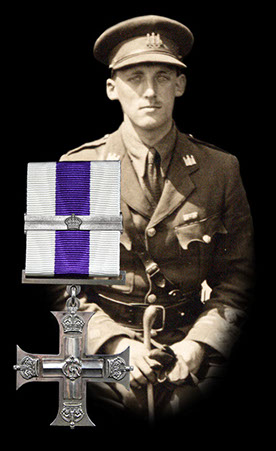
Captain Wood, awarded a Bar to his MC.
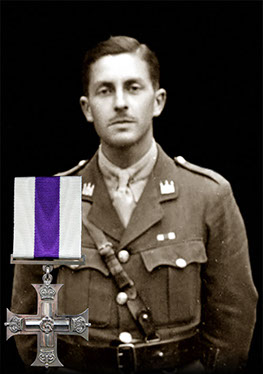
Captain Corfield, awarded the MC.
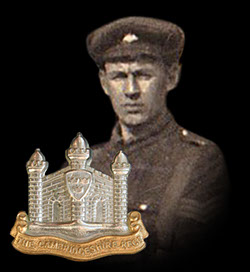
Sgt Frank Ogden, killed by shell.
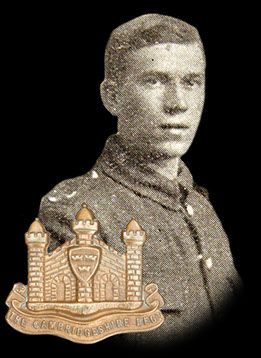
Alf Christmas, killed in action.
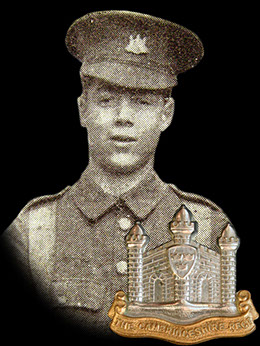
Pte Whitehead, killed in action.

This site went live on the 14th February 2015 to mark 100 years since the 1/1st Cambs went off to war.
WE WILL REMEMBER THEM
Email us: cambsregt@gmail.com
Copyright 2015, 2016, 2017, 2018, 2019 by Felix Jackson. The information and images on this site should not be reproduced without prior permission.